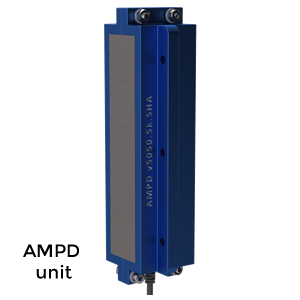Permanent magnets (PMs) have a permanent magnetic field locked-in from time of production, they do not require any energy input to create or maintain that magnetic field during use. Quality “hard” or high coercivity magnets using “rare-earth” minerals, which when treated correctly (no physical shocks or elevated operating temperatures) may last decades. While PMs are not a source of stored energy, they retain an ability to do work based on their magnetic orientation and resultant forces that may be leveraged. Conventional motors leverage those properties by using an electrically generated magnetic field that rotates around the stator owing to the AC waveform or commutation design, which magnetically couples with permanent magnets located in the rotor, thereby creating mechanical work as the rotor turns. That electrically generated magnetic field requires constant current flow, which is directly proportional to the mechanical work produced, typically with 80-95% efficiency depending on the motor design (the mechanical work out of the motor may be 80-95% of the electrical energy going in, so 5-20% of the energy is lost).
The concept of “magnet motors” that leverage permanent magnets for rotary and linear motion have been the pseudoscience purview of many hobbyists and YouTube videos over the years with claims of free energy. While such embodiments may sometimes sustain motion after momentum is applied, they fail to produce meaningful net positive work. The issue typically is a result of “cogging torque”, an effect where a PM moving towards an iron/steel pole may experience positive attraction force and torque in the intended direction of motion, however, when the PM moves past the pole, it experiences negative torque or resistance to the intended motion as it’s still attracted to the same pole is just passed. This results in a sinusoidal wave form with a net work product of zero. This is consistent with Newton’s Third Law of Motion, paraphrased as “for every action there is an equal but opposite reaction”. Electromagnets, since they may be switched on/off, may largely avoid this cogging torque issue, hence they are used in conventional motors. Additional techniques and systems such as magnetic shunts may be used to absorb stray or unwanted flux that could impede performance.
SynDrive finally overcomes those issues. It is a system with active PM switching to create a rotating sequence of magnetic fields that cycle on and off relative to rotor position, which creates a rotating magnetic field, and thus causing motion in the rotor which is akin to conventional motors that use an electrically/electronically generated and/or controlled magnetic field to create rotating force in one desired direction at a time. Since the PM generates the constant magnetic field that is then switched across stator poles to create a rotating magnetic field, only the switching function consumes energy which reduces the overall energy required to operate the motor. Through a particular arrangement of switched permanent magnets, via our AMPD unit and their timing algorithm, continuous motion may be achieved in rotary and linear machines with net positive work output. While the operation of the AMPD unit does involve some energy input, it is considerably less than the mechanical work available from the rotor and shaft. The SynDrive motor therefore may be used directly as a prime mover for other mechanical systems such as compressors and pumps, or it may drive a generator to create electrical power to drive conventional electrical machines. The result is a motor that uses Switched PMs to perform work that use less energy input as compared to the mechanical output – the long fabled “greater than unity motor”.






